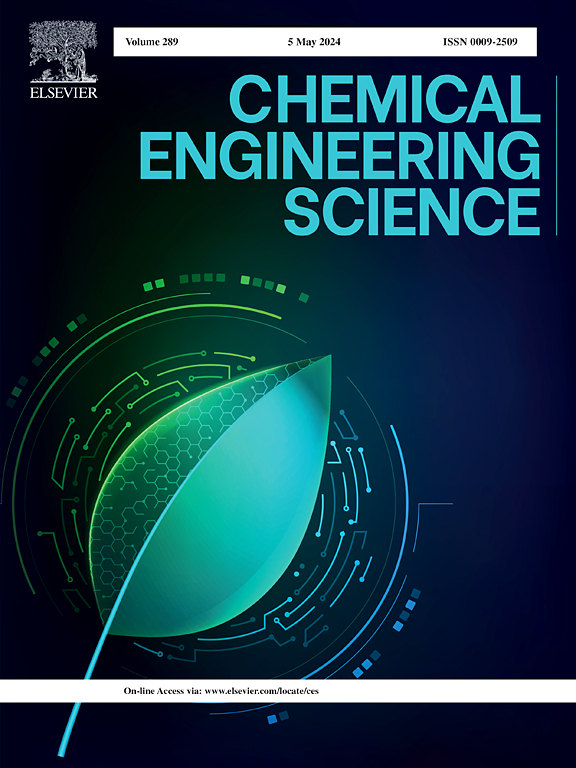Ni-Co双金属硫化物在碳纳米纤维上生长作为强力自支撑水裂解催化剂
IF 4.1
2区 工程技术
Q2 ENGINEERING, CHEMICAL
引用次数: 0
摘要
杂原子掺入碳结构中是析氢反应(HER)和析氧反应(OER)的有效催化剂。然而,制备的复杂性和耐久性不足以满足未来氢经济的需求。本文以聚多巴胺修饰细菌纤维素(BC)为模板制备了ZIF-67/PDA/BC前体。通过调整Ni/Co离子比,我们合成了具有一致ZIF-67/PDA/BC结构的NiCo-MOF/PDA/BC,然后获得了双金属多孔碳基NiCo-NSC@CBC复合材料。NiCo-NSC@CBC-1:4样品保留了纳米管形态和Co9S8活性相,同时表现出NiCo双金属硫化物异质结构和自支撑界面的协同作用。在电流密度为10 mA cm−2时,NiCo-NSC@CBC-1:4电极的析氢过电位为119 mV,析氧过电位为370 mV,证明了其作为自支撑HER/OER电极具有显著的双功能电催化活性和长期稳定性。该材料的优异性能主要是由于NiCo双金属硫化物的异质结构和自支撑界面的协同作用,以及纳米管形态和Co9S8活性相的保存。本研究为研究自支撑材料的表面结构组成和界面效应奠定了坚实的基础。本文章由计算机程序翻译,如有差异,请以英文原文为准。
Ni-Co bimetallic sulfides grown on carbon nanofibers as robust self-supporting catalysts for water splitting
The incorporation of heteroatoms into carbon structures has been demonstrated to be an efficient catalyst for the hydrogen evolution reaction (HER) and oxygen evolution reaction (OER). However, the insufficient preparation complexity and durability fall short of meeting the demands of the future hydrogen economy. Herein, a ZIF-67/PDA/BC precursor was prepared using polydopamine-modified bacterial cellulose (BC) as a template. By adjusting the Ni/Co ion ratios, we synthesized NiCo-MOF/PDA/BC with a consistent ZIF-67/PDA/BC structure, followed by obtaining a bimetallic porous carbon-based NiCo-NSC@CBC composite. The NiCo-NSC@CBC-1:4 sample retains its nanotube morphology and Co9S8 active phase while exhibiting synergistic effects from the NiCo bimetallic sulfide heterostructure and self-supporting interface. The NiCo-NSC@CBC-1:4 electrode demonstrates remarkable bi-functional electrocatalytic activity and long-term stability when utilized as a self-supported HER/OER electrode, as evidenced by the hydrogen evolution overpotential of 119 mV and the oxygen evolution overpotential of 370 mV at a current density of 10 mA cm−2. The exceptional performance of the material is primarily due to the synergistic effect resulting from the heterostructure of NiCo bimetallic sulfide and self-supporting interface, as well as the preservation of nanotube morphology and Co9S8 active phase. This study establishes a robust groundwork for investigating the surface structure composition and interface effects of self-supporting materials.
求助全文
通过发布文献求助,成功后即可免费获取论文全文。
去求助
来源期刊

Chemical Engineering Science
工程技术-工程:化工
CiteScore
7.50
自引率
8.50%
发文量
1025
审稿时长
50 days
期刊介绍:
Chemical engineering enables the transformation of natural resources and energy into useful products for society. It draws on and applies natural sciences, mathematics and economics, and has developed fundamental engineering science that underpins the discipline.
Chemical Engineering Science (CES) has been publishing papers on the fundamentals of chemical engineering since 1951. CES is the platform where the most significant advances in the discipline have ever since been published. Chemical Engineering Science has accompanied and sustained chemical engineering through its development into the vibrant and broad scientific discipline it is today.
 求助内容:
求助内容: 应助结果提醒方式:
应助结果提醒方式:


